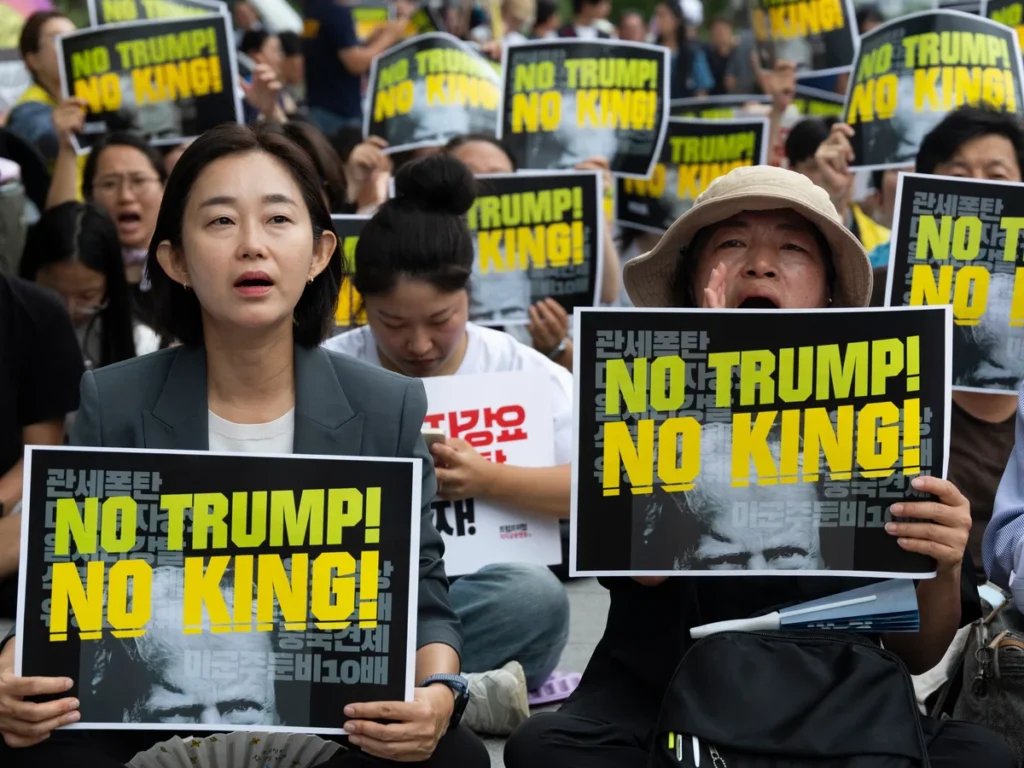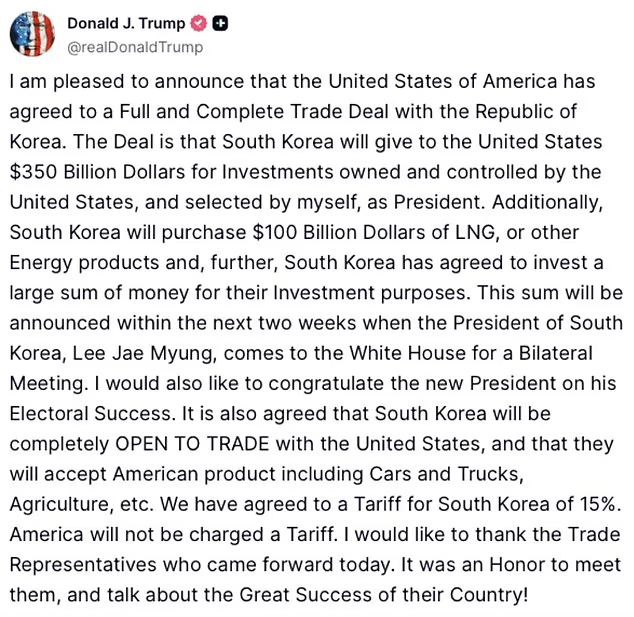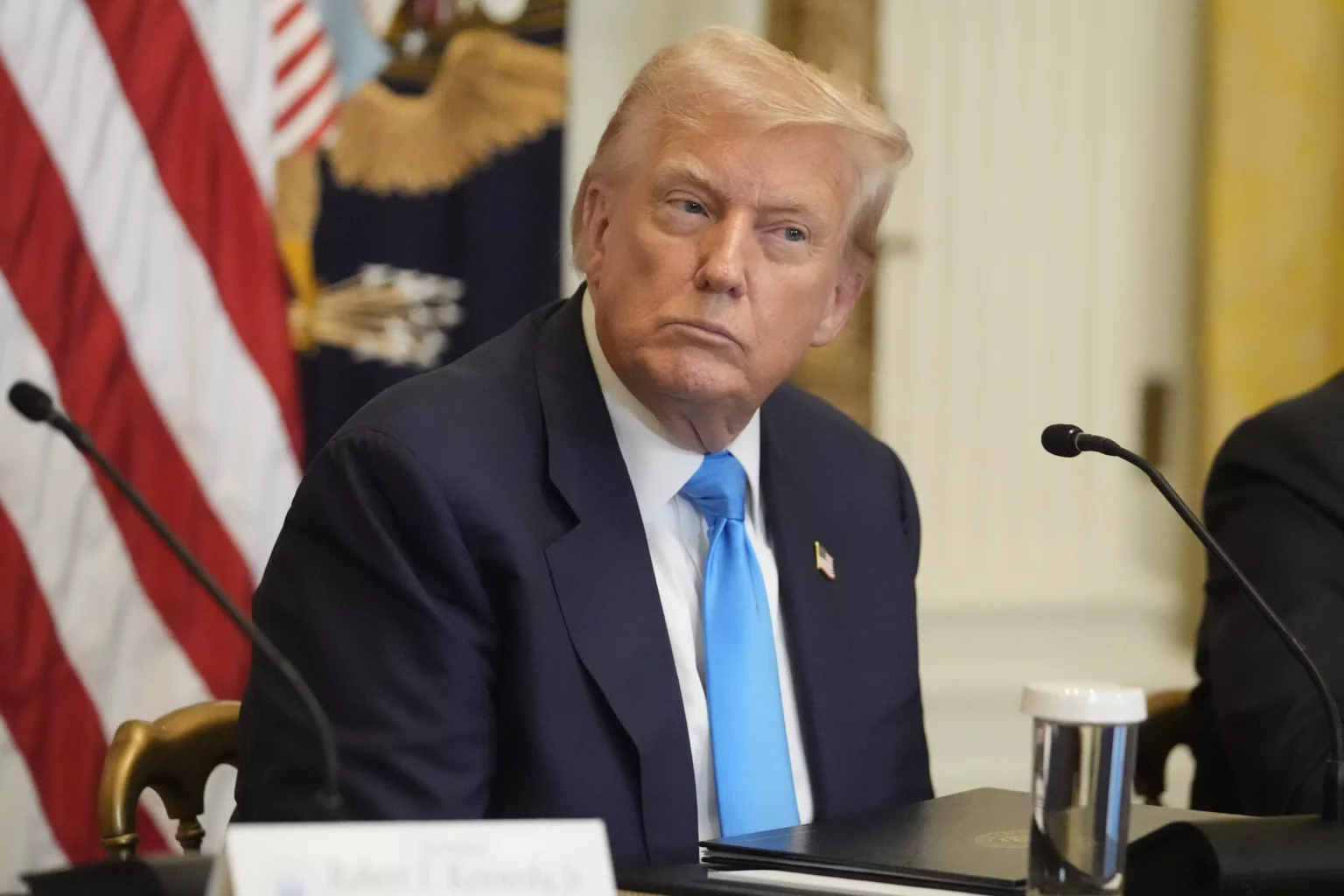Trump South Korea Deal Imposes 15% Tariff Ahead of Deadline

The Trump South Korea deal imposes a 15% tariff on key imports like cars and semiconductors, announced just ahead of the 1 August deadline. This trade agreement, revealed by President Donald Trump, spares South Korea from a looming 25% tariff and secures a $350bn investment in the US.
Trade Agreement Helps Seoul Avoid 25% Tariff Hike
Had the agreement not been reached, South Korean exports to the US would have faced significantly higher taxes. The deal was struck under mounting pressure, especially after Japan negotiated similar terms the week before. By securing a lower rate, Seoul has avoided a possible setback for its automotive and tech industries.
Trump South Korea Deal Includes $350 Billion Investment in US
As part of the arrangement, South Korea has agreed to invest $350 billion in the United States. Around $150 billion will go toward shipbuilding, including warships, helping to boost America’s declining naval industry. The rest of the funds will support manufacturing projects involving semiconductors, batteries, and electric vehicles.
Trump South Korea Deal Preserves Rice and Beef Market Protections

South Korea stood firm on protecting its agriculture sector. The deal does not require Seoul to open its rice or beef markets to more US imports. This was a red line for South Korea, where farmers had been preparing for protests if these protections were lifted.
Steel and Aluminium Still Face 50% Tariff
While semiconductors and cars benefit from reduced tariffs, steel and aluminium exports from South Korea will face a 50% tax. This aligns with President Trump’s broader global tariff policy on those materials.
South Korean Leadership Welcomes the Deal
President Lee Jae Myung has hailed the agreement as a diplomatic win. According to him, South Korea now has fairer trade conditions compared to other US partners. He emphasized that the deal helps protect key domestic industries while advancing strategic partnerships.
Military Talks Deferred to Upcoming Summit

This agreement does not address the military alliance between the US and South Korea. Discussions around US military spending and troop presence in South Korea are expected to take place during President Lee’s upcoming visit to Washington. There is speculation that Seoul might be asked to increase its financial contribution for US defense support.
Trump’s Trade Strategy Continues to Stir Debate
Since returning to office in January, President Trump has reintroduced tariffs on several countries. He claims these measures will protect American jobs and revive domestic manufacturing. However, critics argue that his unpredictable trade policy is causing price hikes for US consumers and disrupting global markets.
Final Thoughts: Strategic Gains Amid Uncertainty

The Trump South Korea tariff deal showcases a calculated trade-off. South Korea secured reduced tariffs on key exports and retained agricultural protections. In return, it committed to vast US investments, mainly in defense and tech. While immediate economic conflict was avoided, future negotiations—especially on military matters—could bring more challenges.




